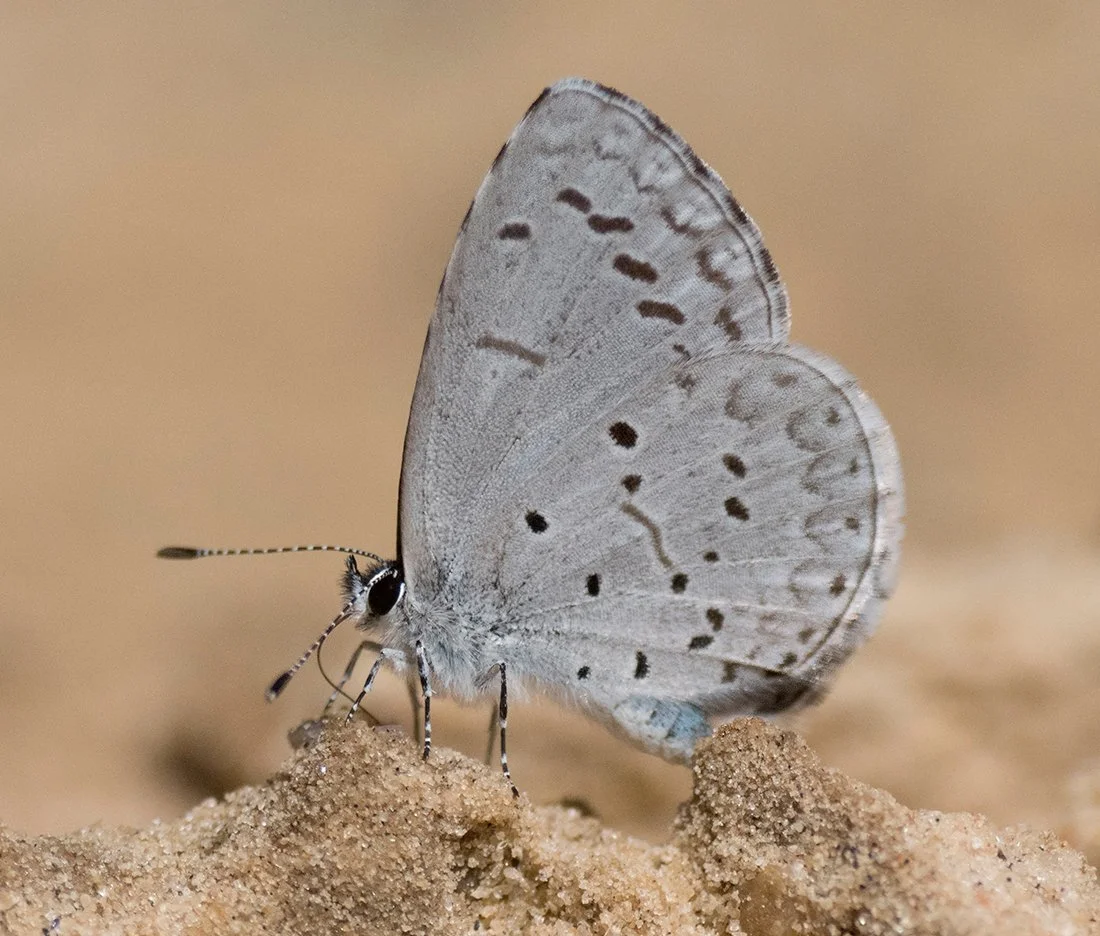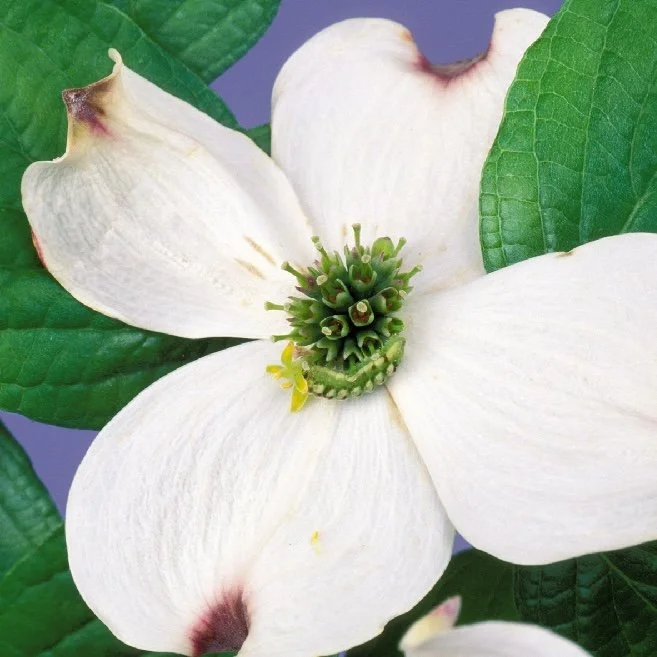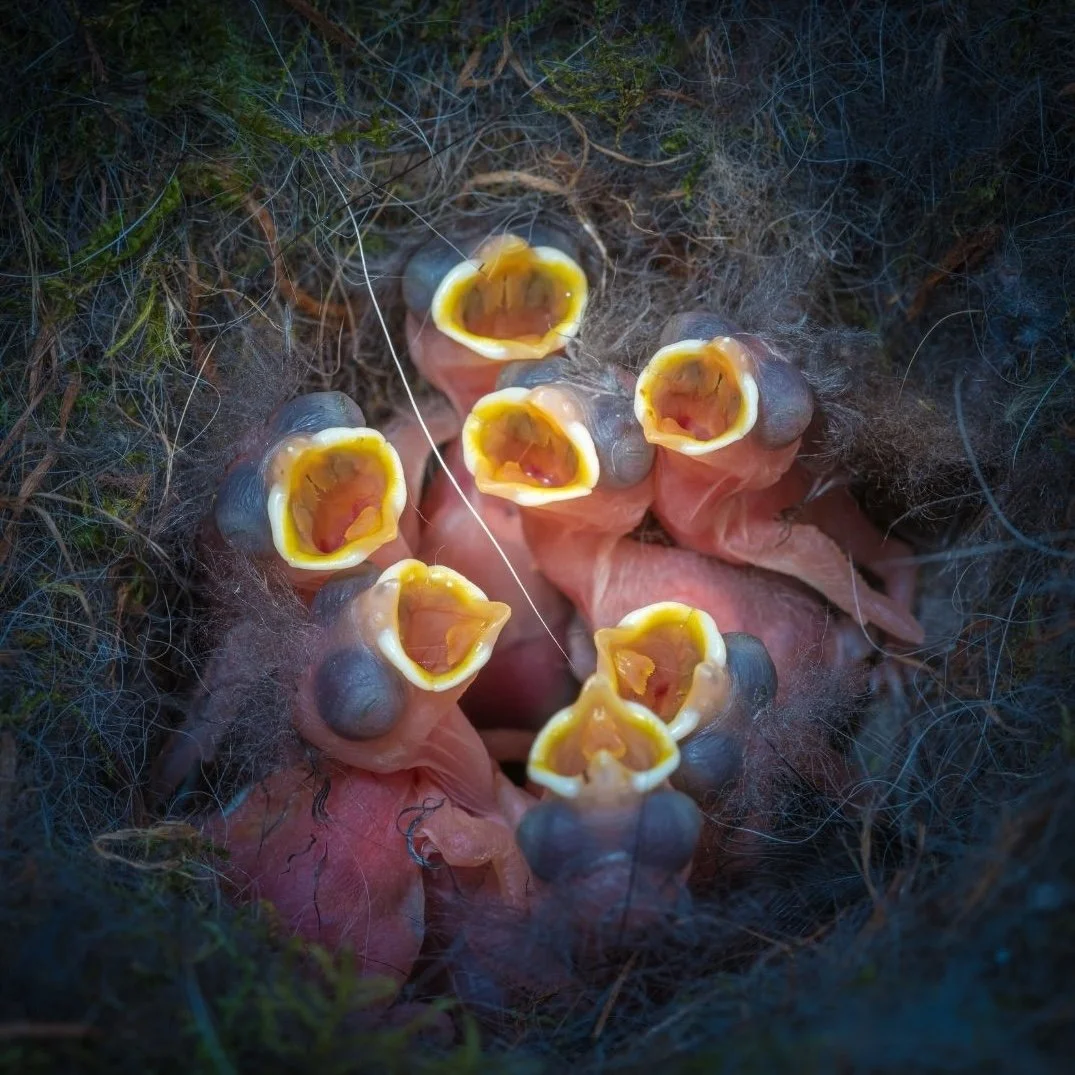
Summer Azure
Celastrina neglecta
Photo of male adult: Mary Jane Krotzer
Blue Ridge Audubon Society Beaver Lake Bird Sanctuary
1056 Merrimon Ave, Asheville
Can you spot the bright, lavender wings of the Summer Azure butterfly near the parking lot? In the Sanctuary, butterfly and moth caterpillars are a critical food source for baby birds. More butterflies = more birds!
With Support From
The Carmody-Peterson Family

Meet the Butterfly
The iridescent blue Summer Azure, and its close cousin, the Spring Azure, are among the smallest butterflies found in the United States.
They belong to the gossamer-winged Lycaenidae family of butterflies.
They’re named azure after the color of a bright blue sky on a sunny day.
Found mainly in and along the edges of deciduous forests, in fields, and along streams across most regions of the eastern and central United States and southern Canada, the Summer Azure is widespread, common and adaptable.
Male or Female?
As adults, Summer Azures are sexually dimorphic with two forms. Males have narrow black borders on their dorsal (open) wings. Females, like the one shown below, have wide black borders.
You can often see white veins on the open wings of both sexes, especially newer adults.
Photos: Lydia H. Fravel (background) and Nils Helstrom (inset)
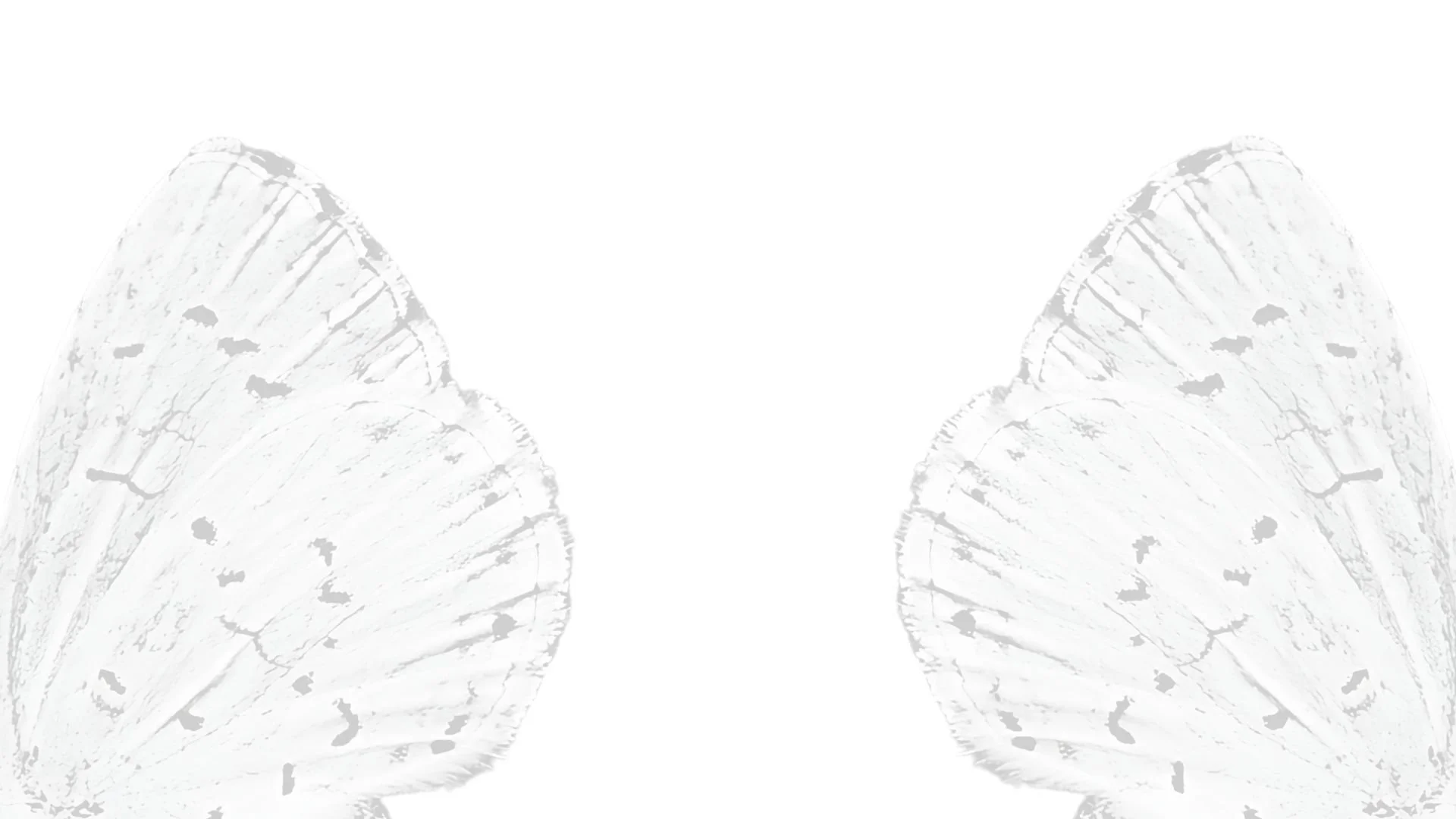
Males and females have the same ventral (closed) look with a chalky white or pale grayish-blue color and array of black spots.
Wings open or shut, Summer Azures are styling with their giant black eyes and white-tipped black-and-white striped antennae perfectly coordinated with their black-and-white striped legs.
Photo: Mary Jane Krotzer
It’s a Puddling Party
It’s hard to get Summer Azures to be still long enough to see them—except when the males “puddle,” usually at a moist sandy area along a stream.
Males need the salt and other minerals in these puddles to transfer to the females during mating.
Photo: Sara Bright
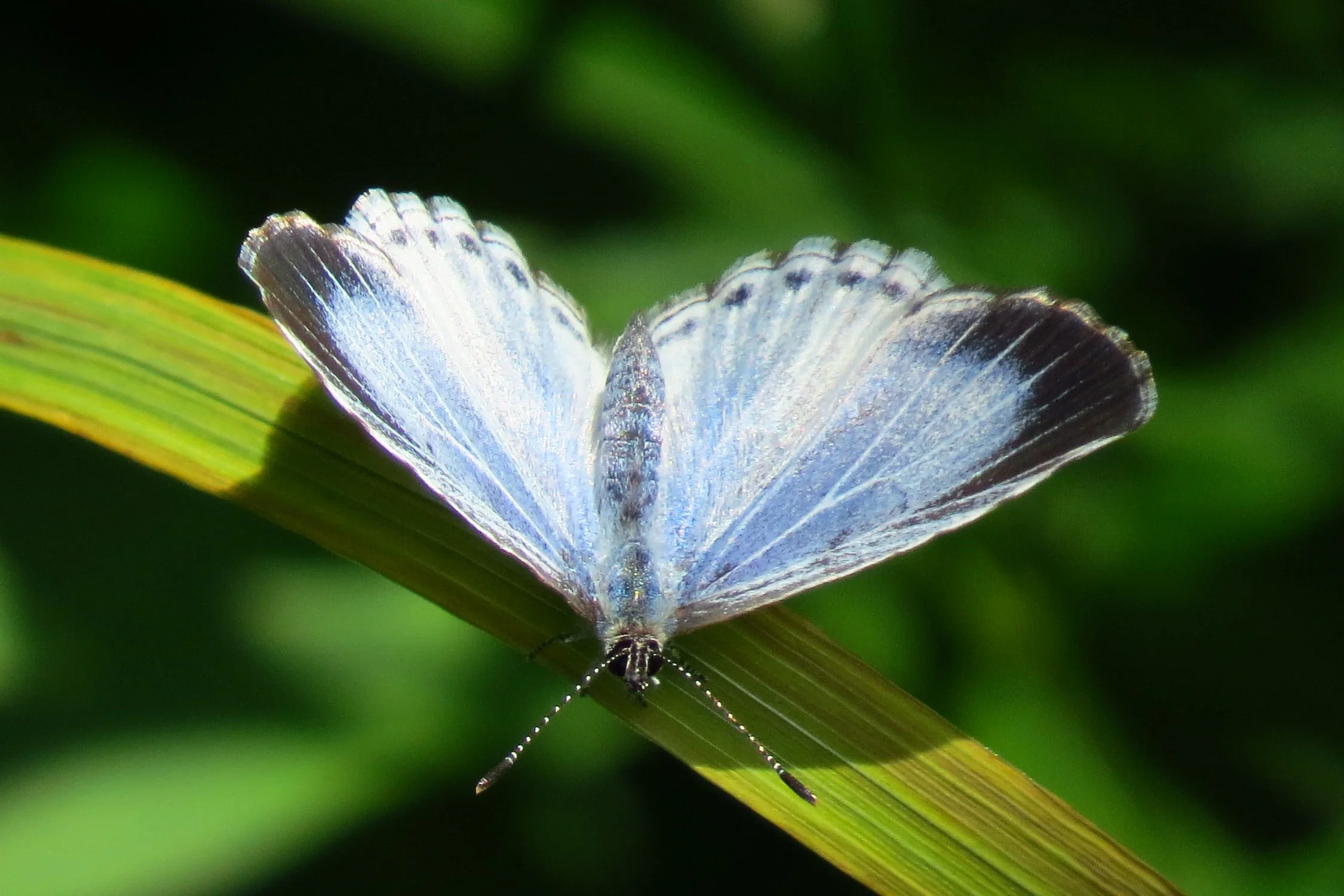
Azures tend to rest with their wings closed, so their namesake color can be thrilling to see.
One photographer said, “When a blue opens it's wings, it's a small miracle.”
Photo of female Summer Azure: D. Gordon E. Robertson, CC BY-SA 3.0, via Wikimedia Commons
Azures even have a fabric named after them. “Celestrina” (spelled with an “e” instead of an “a”) is dainty silk taffeta that’s dusty blue with a hint of lavender, said to evoke the beauty and grace of azure butterflies.
Summer Azures are among the smallest butterflies in the U.S. with a wingspan of 0.91 to 1.41 inches (2.3-2.9 cm).
Photo: Jules Stringer
By comparison, the Eastern Tiger Swallowtail (one of our country’’s largest) has an average wingspan of 4.5 inches.
Photo: Sean F. Ryan
Tangled Up in Blues
Summer Azures used to be lumped into a “spring azure complex” with other small blue butterflies. That’s why their species is called “neglecta,” meaning "neglected" or disregarded by entomologists for over a century. Today, they are recognized as distinct species. Here’s a comparison of the upper sides of males from six mid-Atlantic species by Harry Pavulaan.
Top Left: Spring Azure, Celastrina ladon
Top Right: Northern Azure, Celastrina lucia
Middle Left: the spring form of Summer Azure, Celastrina neglecta
Middle Right: Cherry Gall Azure, Celastrina serotina
Bottom Left: Holly Azure, Celastrina idella
Bottom Right: Appalachian Azure, Celastrina neglectamajor

What’s the Difference?
The Summer Azure has several doppelgängers, but the Spring Azure is the best counterfeit. You need magnification to confirm the physical differences between the Spring Azure and Summer Azure. Here are a few clues you can use to make a guess about which blue butterfly you see.
Photos: Sara Bright
Summer Azure
Celastrina neglecta
Underwings: Summer Azures tend to be white or pale grey with black spots.
Male Upper Wings: At a microscopic level, Summer Azure wing scales overlap neatly like shingles, giving them a metallic luster. The timing of their emergence as adults determines their color. Spring? Powdery blue with white veins. Summer? A much more lavender hue, like those at the butterfly station.
Timing & Host Plants: Summer Azures have 2-4 generations in a year, so you can see adults flying in spring, summer, or fall. They lay eggs on the flowers of many different host plants, but not on flowering dogwood.
Spring Azure
Celastrina ladon
Underwings: Spring Azures tend to be dark grey with larger brown spots.
Male Upper Wings: Under magnification, Spring Azures have elongated wing scales. Lepidopterist Harry Pavulaan describes their distinct sheen as “greasy film” and notes that they tend to be uniformly violet-blue dorsally.
Timing & Host Plants: Spring Azures have only one generation per year. Adults emerge in spring with the blooms of its primary host plant—flowering dogwood*, Cornus florida. Can you spot the Spring Azure caterpillar?
*Sadly, dogwoods are in decline due to dogwood anthracnose fungus, causing Spring Azure populations to decline as well.

Summer Azure Life Cycle
Egg: 3-6 days
Adult: 3 days-few weeks
Caterpillar: 12-25 days
Chrysalis: 7-19 days or over winter
Illustration: Lauren Gingery
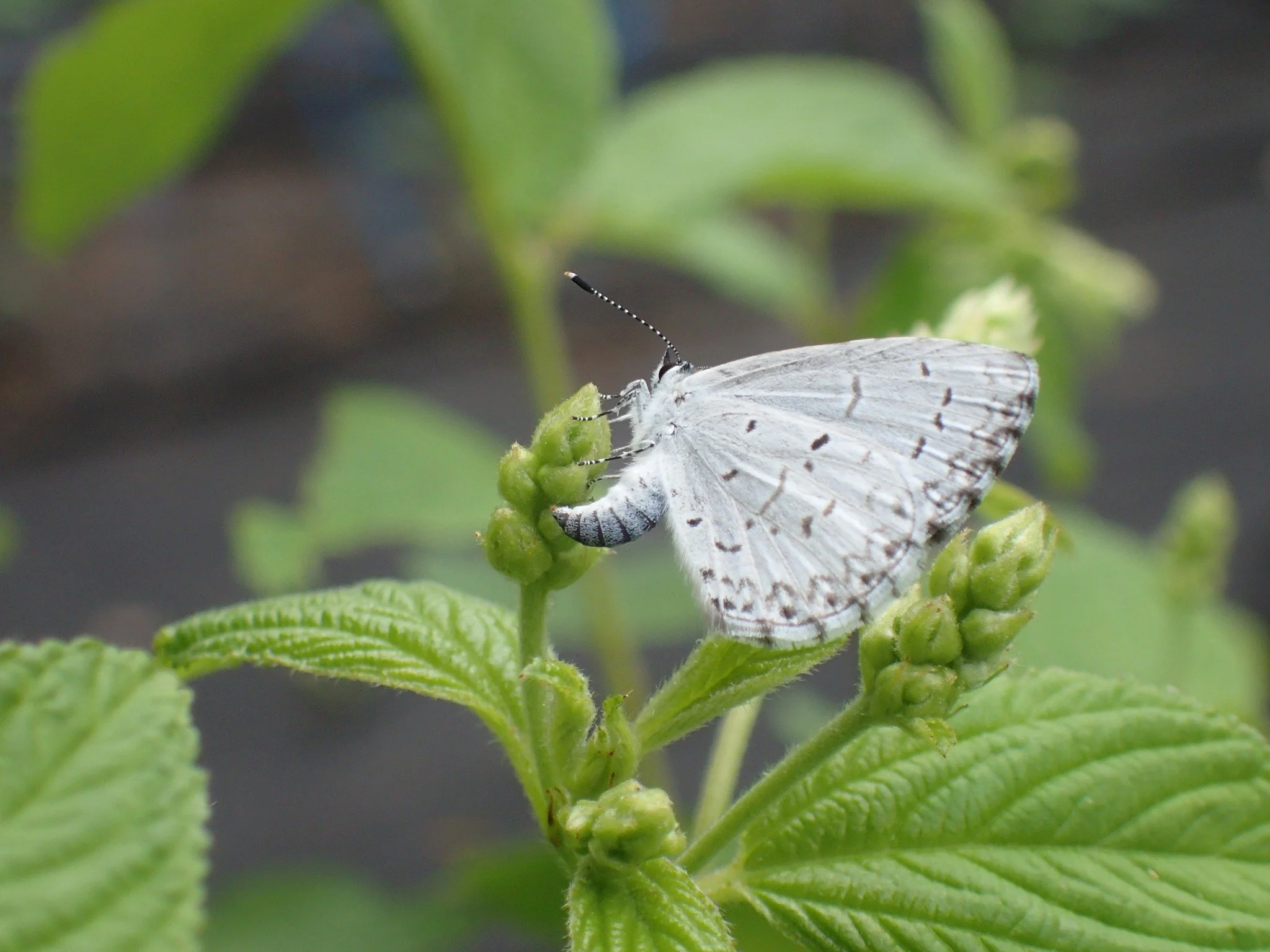
Floral Fare
While most butterflies lay eggs on leaves or stems, Summer Azure mothers lay eggs on the flower buds of host plants. Caterpillars are well hidden in open flowers as they eat.
Eggs are off-white or blue-green with detailed patterns that create a lacy effect.
Photos: Chris Murrow (adult) and Sara Bright (egg)
Summer Azure Host Plants
-

American Holly Tree
Ilex opaca - Native hollies support about 48 butterfly and moth caterpillar species. Robins and cedar waxwings feast on their berries in the winter. Photo: Penny Longhurst
-

Black Cherry
Prunus serotina - At 456 caterpillar species each, native cherries and willows are second only to native oaks in hosting caterpillars (baby bird food). Photo: Phyllis Stiles
-

And More...
Other larval host plants used by Summer Azures include shrubby dogwoods (not the flowering dogwood tree) and Agastache, Aralia, Ceanothus, Cimicifuga, Erythrina, Eupatorium, Lupinus, Rhus, Spiraea, and Viburnum, which is pictured above with a female deposting an egg. Photo: Chris Murrow
Caterpillars with Backbones?
Your biology teacher was correct! Invertebrates don’t have backbones, but Summer Azure larvae are very small with a pattern that “looks” like a backbone. It runs the length of their body and can be green, yellow-green, creamy white or pinkish red.
The pattern and colors help camouflage the caterpillar.
Photos: Green caterpillar by Mary Jane Krotzer, White caterpillar by Jacy Lucier, CC BY-SA 4.0, via Wikimedia Commons
Ants: Friends or Bodyguards?
If you notice ants on the flowers of a Summer Azure host plant, take a closer look. You may find a caterpillar.
Summer Azures secrete “honeydew” from special glands as they feed. Some ants like honeydew so much, they care for the caterpillars rather than eat them.
To stimulate the release of more honeydew, the ants may even “milk” the caterpillar by stroking it with their antennae!
In exchange for the sweet reward, the ants protect the caterpillar. They may swarm, bite, or even eat threatening predators or parasitoids.
Both organisms benefit in the relationship, which is an example of mutualistic symbiosis.
Photo: Mary Jane Krotzer (top) and Bill Sheehan (bottom)
More Caterpillars = More Birds!
Butterfly and moth caterpillars are the leading source of baby food for birds that live on land. Without caterpillars, most of them would starve.
Researchers have recorded mom and dad birds delivering caterpillars to nests and, once the babies have fledged, they reviewed the footage to count caterpillars.
A single clutch of chickadees will consume 6,000 to 9,000 caterpillars before fledging, plus more for 21 days after fledging!
Caterpillars are loaded with protein and carotenoids and soft enough for baby birds to swallow. If we want lots of birds, we need to support butterflies and moths.
Photos: Chickadees by William Freebilly (chicks) and Matt Cuda (adult) via Canva.com.
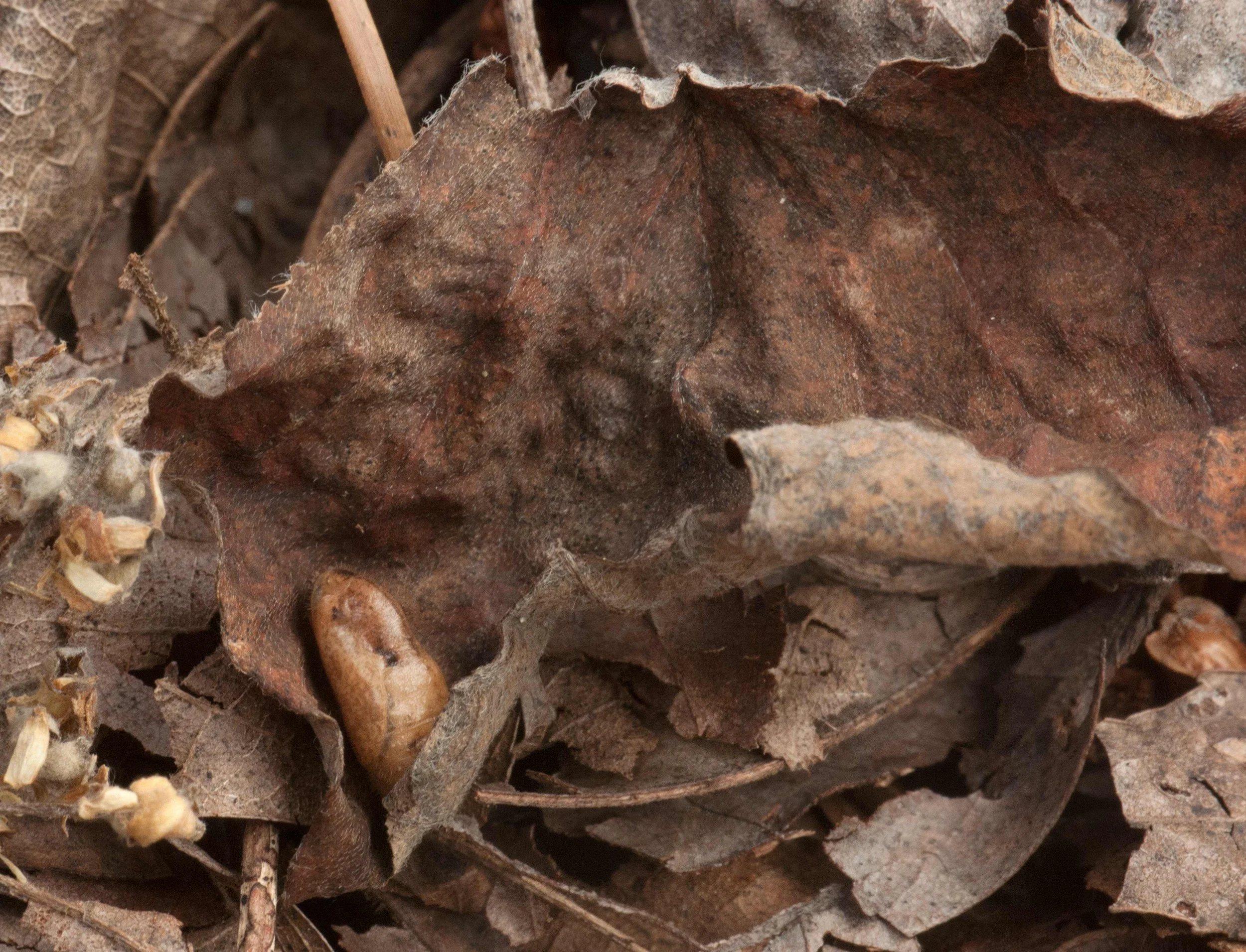
Landing in the Leaves
After feeding and shedding its skin up to 5 times, a caterpillar forms a speckled, light brown bean-shaped chrysalis.
But unlike many other butterflies that spin a thread and suspend their chrysalis from a tree or some other vertical structure, Summer Azures “disappear” among leaf litter.
In warm weather, adults will emerge and produce a new generation. In fall, the Summer Azures will overwinter as chrysalises and emerge as butterflies the following spring.
With extended warm weather in the South, Summer Azures may produce as many as four generations.
Photos: Sara Bright
Color Your Own Summer Azure Butterfly
Download a free coloring page by Nina Veteto below. Did your Summer Azure butterfly emerge in the spring? Then make it as blue as the sky. Did it emerge it the summer? Then make it lavender. (Imagine if the color of our skin was determined by the month we’re born!)
How You Can Help
Summer Azures are an important part of our ecosystem. Here are actions you can take to support them:
Create your own "puddling station" for butterflies by setting aside a patch of soil in a sunny area and keeping it moist. Add a bit of manure or compost to provide more salt and minerals.
Create “soft landings” and leave the leaves for overwintering chrysalises.
Add caterpillar host trees like black cherry and American holly.
Include flowers in your garden for nectaring adults.
Remove exotic invasive plants that displace native species.
Avoid pesticide use.
Learn more about Pollinator Gardening Principles and create a certified pollinator habitat in your yard.
Photo: Puddling azures by Sara Bright.
Thank You
Many people and organizations made this Butterfly Trail possible. See the full list. For the Summer Azure Butterfly, we’d like to give special thanks to:
Blue Ridge Audubon Society for hosting the station!
Dr. Harry Pavulaan for his Summer Azure research
Jeffrey Pippen, Director, Carolinas Butterfly Monitoring Program, for his extensive butterfly expertise
Dr. Douglas Tallamy for his advice on the relationship between caterpillars and birds
Cathy Davenport for extensive research support
Nina Veteto at Blue Ridge Botanic for illustrating the coloring page
NC State Parks’ Butterflies of North Carolina website
Lauren Gingery for her illustration support
Dr. Matt Bertone, Department of Entomology and Plant Pathology, NC State University for taking photos of their butterfly specimens for the freestanding wings
Amy Landers at Landers Creative for webpage design
Jill Jacobs at Spriggly’s Beescaping for interpretive sign design
And these incredible photographers:
Sara Bright
Mary Jane Krotzer
Chris Murrow
Bill Sheehan
Jacy Lucier
Sean F. Ryan
Penny Longhurst
Phyllis Stiles












